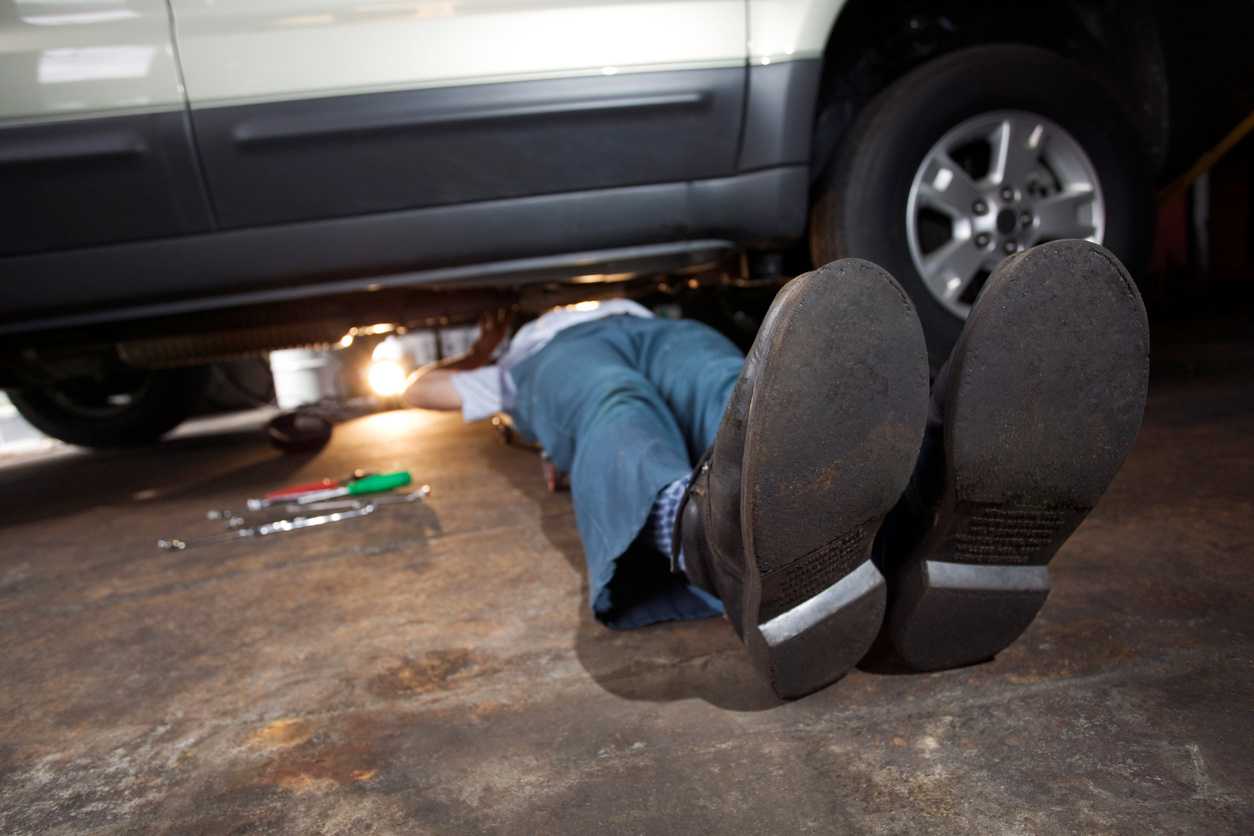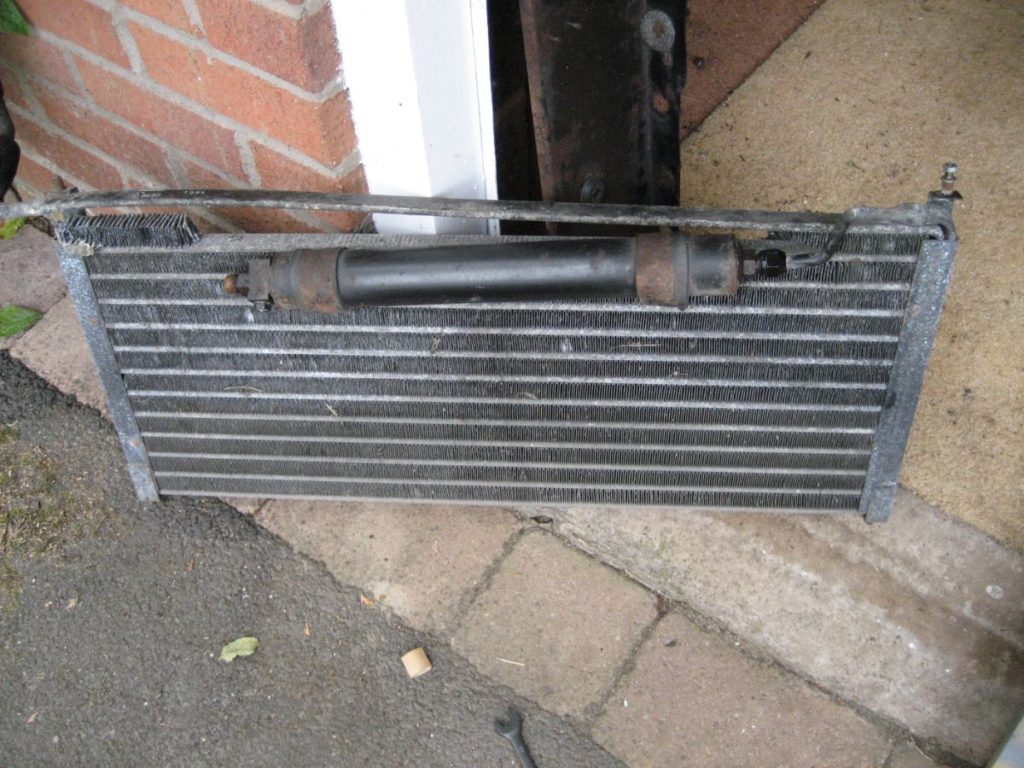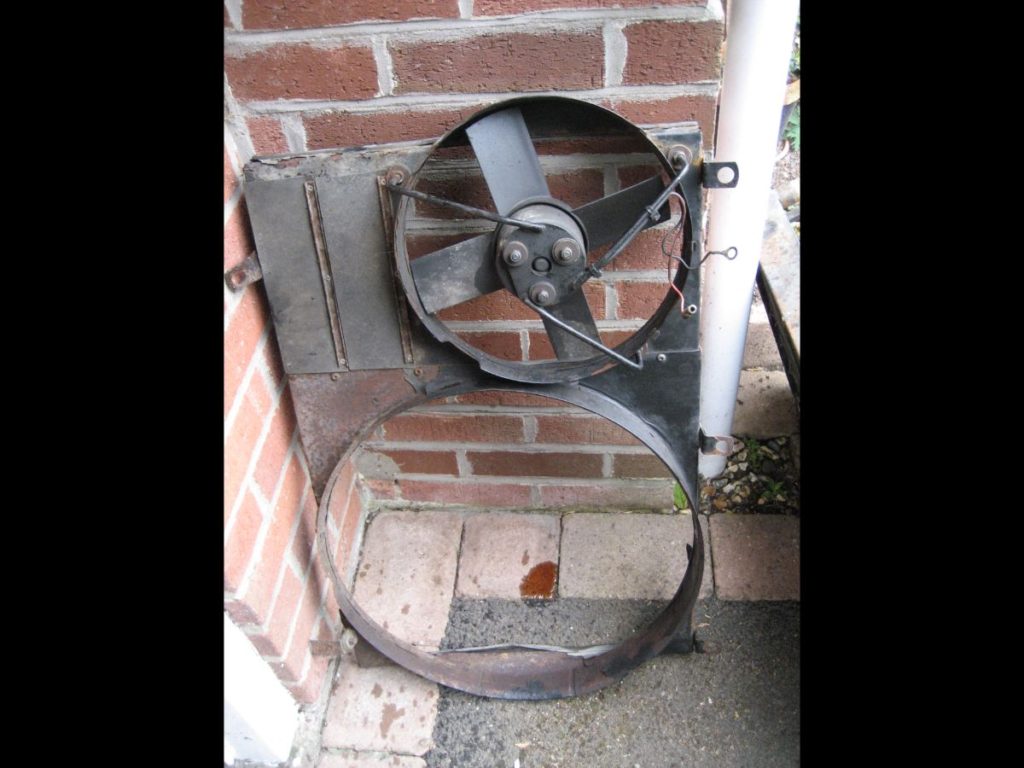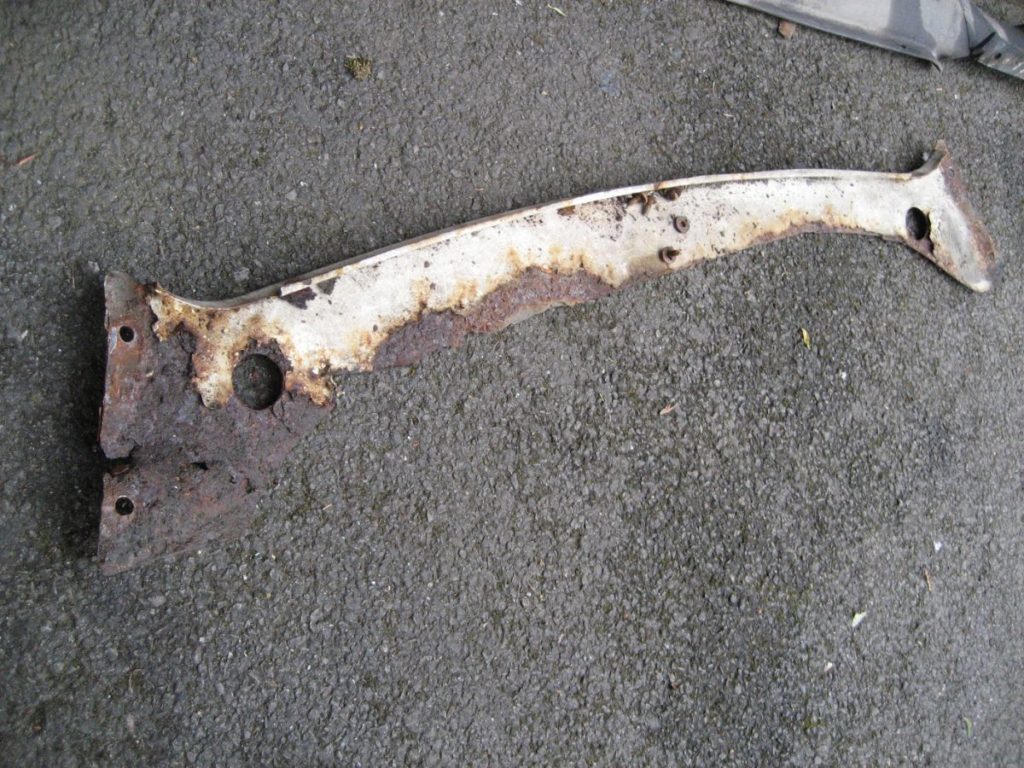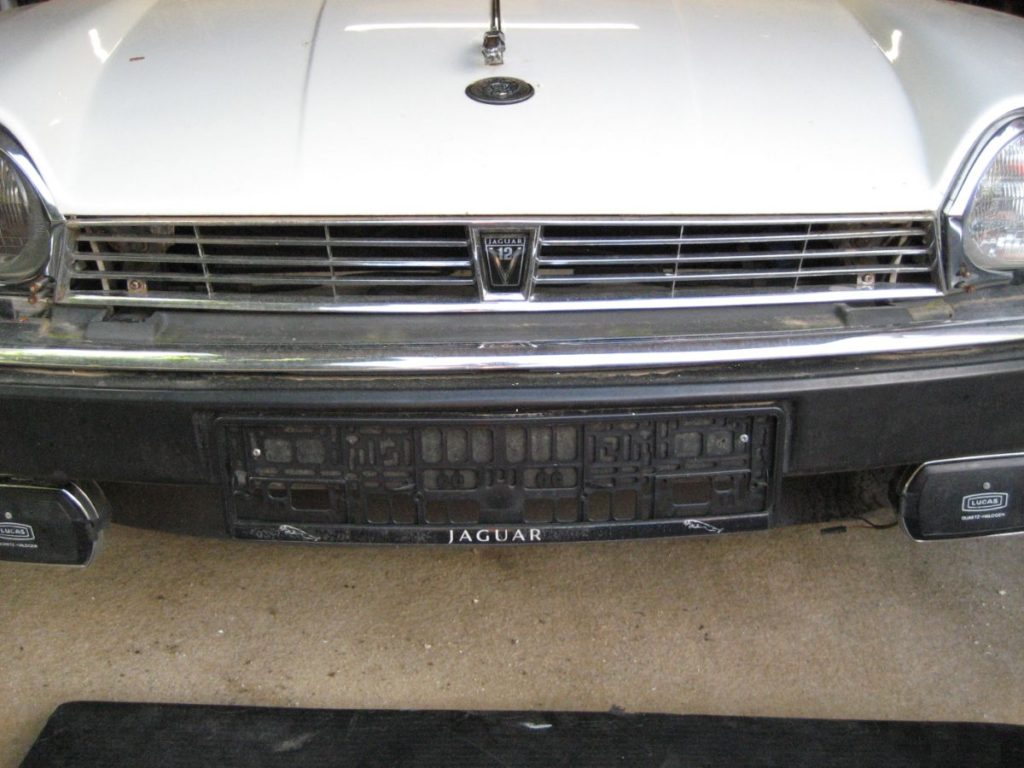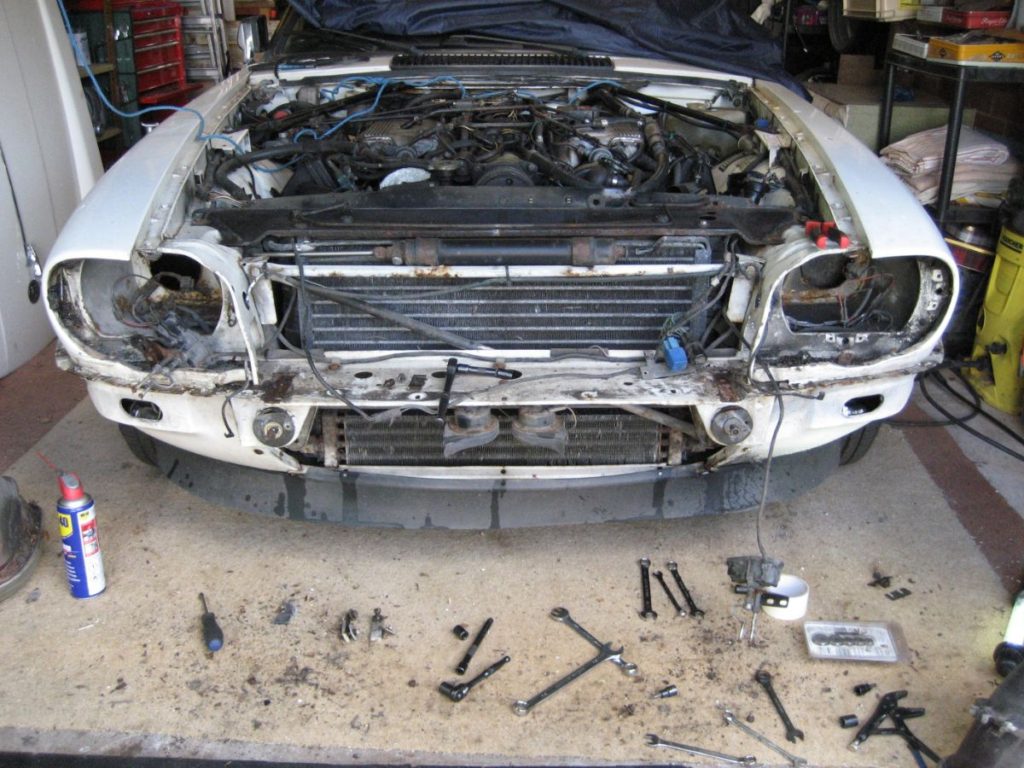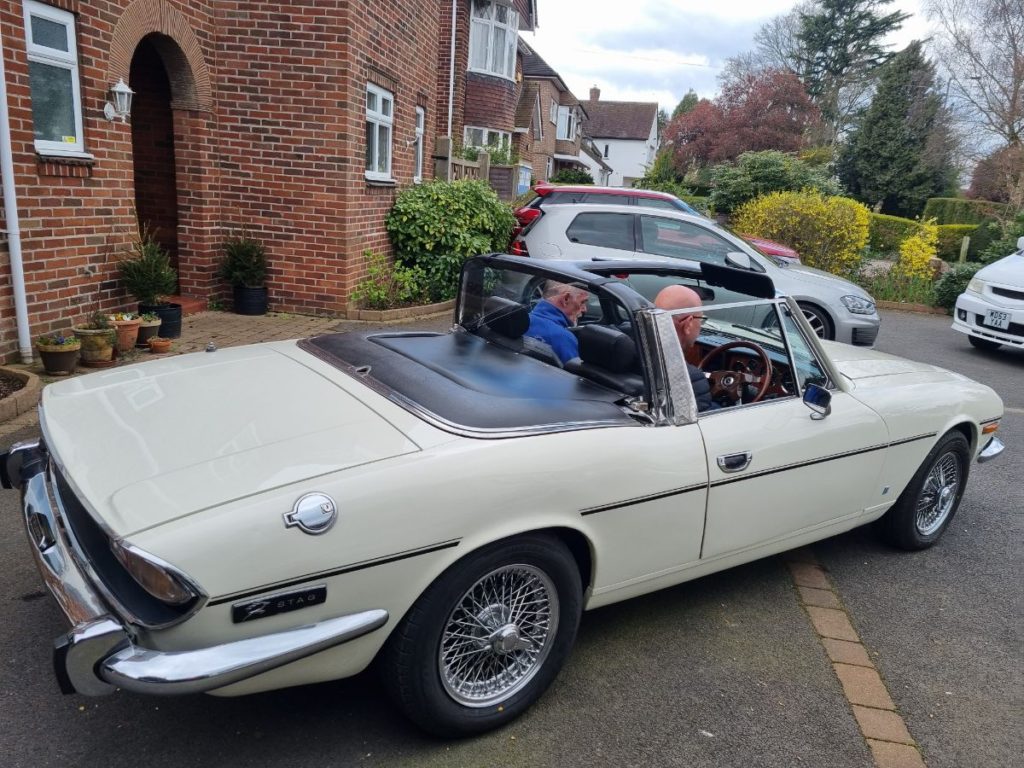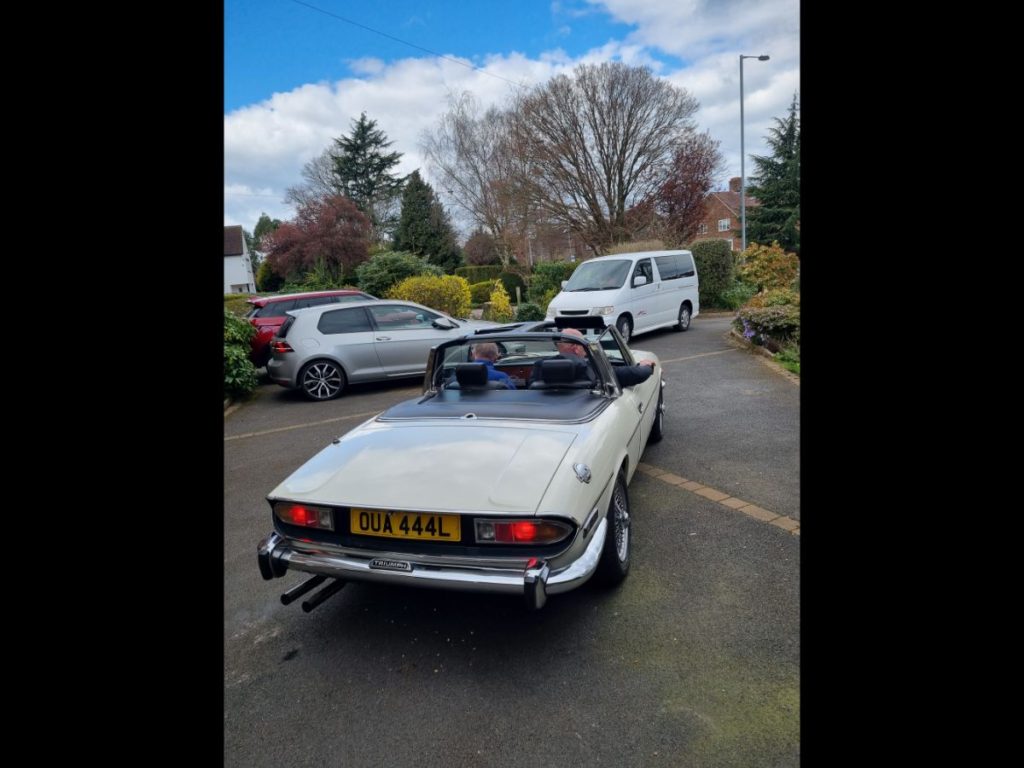New drive belts were delivered this week, but as always with classics, I’ve found another problem. The fan cowls have been fitted but not secured properly. So much so, there is no way I can get the drive belts around the fan blades. So, I’ve decided to continue dismantling the front end and to worry about the belts as I put the front back together again.
First to be removed was the condenser and receiver/dryer for the aircon. It looks like the top cooling strip has come detached from the frame. Another job for the future.
Then the radiator came out after draining the system from the lower hose. The radiator is definitely serviceable. It will need flushing and painting but that’s all.
The fan cowls are also in need of de-rusting and painting, but they can be re-used as well.
The assembly is missing the packing blocks / radiator seals on the side and bottom, and also the cross member undershield which I can see in the parts catalogue but isn’t on the car.
Also at the front I removed the damaged chin spoiler and lower front panel. Both need replacement. The lower front panel has rusted through.
